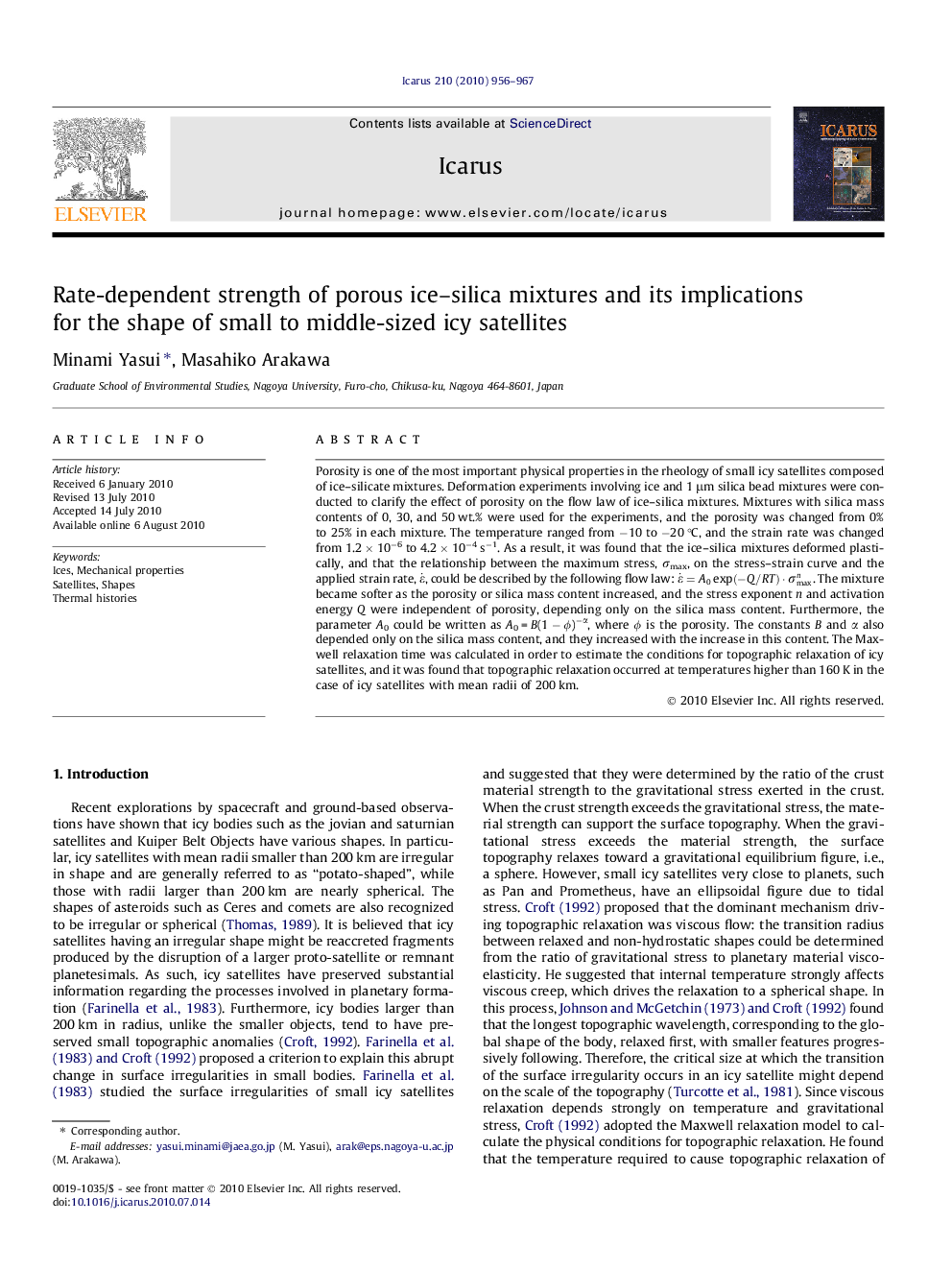| Article ID | Journal | Published Year | Pages | File Type |
|---|---|---|---|---|
| 1773638 | Icarus | 2010 | 12 Pages |
Porosity is one of the most important physical properties in the rheology of small icy satellites composed of ice–silicate mixtures. Deformation experiments involving ice and 1 μm silica bead mixtures were conducted to clarify the effect of porosity on the flow law of ice–silica mixtures. Mixtures with silica mass contents of 0, 30, and 50 wt.% were used for the experiments, and the porosity was changed from 0% to 25% in each mixture. The temperature ranged from −10 to −20 °C, and the strain rate was changed from 1.2 × 10−6 to 4.2 × 10−4 s−1. As a result, it was found that the ice–silica mixtures deformed plastically, and that the relationship between the maximum stress, σmax, on the stress–strain curve and the applied strain rate, ε˙, could be described by the following flow law: ε˙=A0exp(-Q/RT)·σmaxn. The mixture became softer as the porosity or silica mass content increased, and the stress exponent n and activation energy Q were independent of porosity, depending only on the silica mass content. Furthermore, the parameter A0 could be written as A0 = B(1 − ϕ)−α, where ϕ is the porosity. The constants B and α also depended only on the silica mass content, and they increased with the increase in this content. The Maxwell relaxation time was calculated in order to estimate the conditions for topographic relaxation of icy satellites, and it was found that topographic relaxation occurred at temperatures higher than 160 K in the case of icy satellites with mean radii of 200 km.
